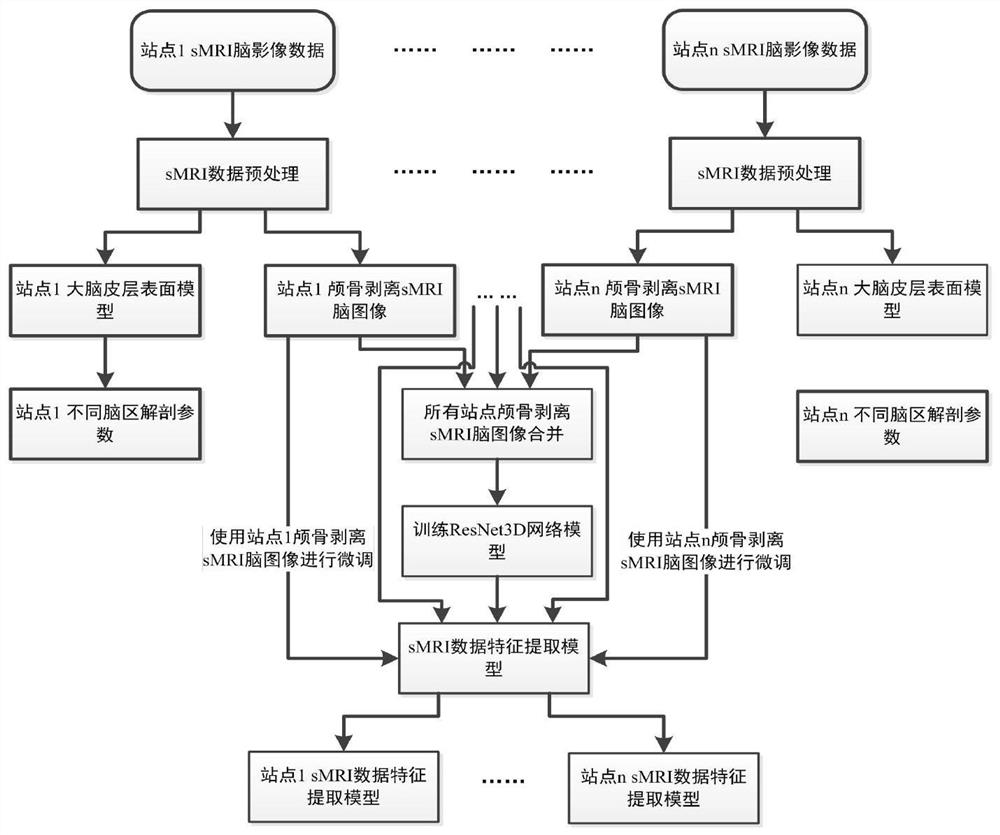Classification and identification method based on multi-modal multi-site data fusion
A classification recognition and data fusion technology, applied in character and pattern recognition, image data processing, neural learning methods, etc., can solve the problems of poor model generalization ability, low model accuracy, data heterogeneity, etc., and achieve good universality Sex and prospects of use, ensuring adequacy, and improving the effect of accuracy
- Summary
- Abstract
- Description
- Claims
- Application Information
AI Technical Summary
Problems solved by technology
Method used
Image
Examples
Embodiment
[0231] A classification recognition method based on multi-modal multi-site data fusion, the steps of which are:
[0232] Step 1: Select USM(101), NYU(184), UCLA(111), UM(146), Leuven(64), KKI(56) and Yale(56) from Autism Brain Imaging Data Exchange Database (ABIDE) ) These 7 sites were studied. These 7 sites provided sMRI and R-fMRI brain images of 718 subjects in total, and the age distribution of the subjects was under 18 years old. Among them, there were 349 Type A subjects, with a male to female ratio of 302 / 47, an average age of 14.52 years, and an average PIQ (Performance Intelligence Quotient) of 104; Type B subjects had 369 subjects, with a male to female ratio of 298 / 71, an average age of 9.46 years, and an average PIQ of 104. 113.
[0233] Step 2: Use FreeSurfer software to preprocess the sMRI data. Firstly, the sMRI data will be corrected by anterior commissure-posterior commissure (AC-PC) to adjust the irregular posture caused by the subject's head movement duri...
PUM
 Login to View More
Login to View More Abstract
Description
Claims
Application Information
 Login to View More
Login to View More - R&D
- Intellectual Property
- Life Sciences
- Materials
- Tech Scout
- Unparalleled Data Quality
- Higher Quality Content
- 60% Fewer Hallucinations
Browse by: Latest US Patents, China's latest patents, Technical Efficacy Thesaurus, Application Domain, Technology Topic, Popular Technical Reports.
© 2025 PatSnap. All rights reserved.Legal|Privacy policy|Modern Slavery Act Transparency Statement|Sitemap|About US| Contact US: help@patsnap.com



